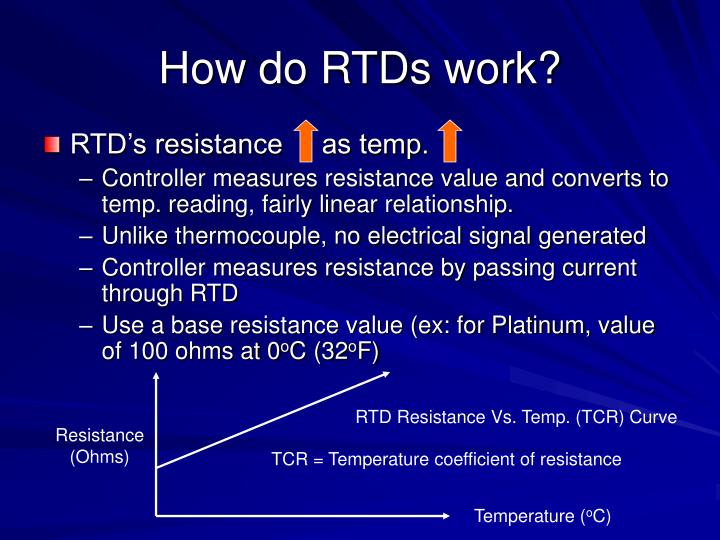How Do Rtds Work
How Do Rtds Work. While thermocouples are associated with lower cost and broader temperature ranges, they are less accurate (around ±0.2°c to ± 0.5°c) and are more susceptible to drift. An rtd (resistance temperature detector) changes resistance directly proportional with its temperature.

When determining temperature, rtds measure the change in electrical resistance of the wire. Rtds work on a basic correlation between metals and temperature. Rtds are built with a pretty straightforward design that gives a reliable read, particularly between a certain, wide temperature range.
Rtds Work On A Basic Correlation Between Metals And Temperature.
An rtd works by using the correlation between a metal’s temperature and the metal’s resistance in order to provide a. The sensor here tracks temperature by measuring the change in resistance in relation to the surrounding temperature, acting as a very accurate and responsive sensor. While thermocouples are associated with lower cost and broader temperature ranges, they are less accurate (around ±0.2°c to ± 0.5°c) and are more susceptible to drift.
Hello Everyone Welcome To Engineer’s Academyin This Video We Will Learn The Working Of Rtd Its Construction, Applications & Types.
Similarly, as the temperature of the rtd resistance element increases, the electrical resistance, measured in ohms (ω), increases. The resistance vs temperature relationship is well known and repeatable. Rtds are built with a pretty straightforward design that gives a reliable read, particularly between a certain, wide temperature range.
An Rtd Is A Passive Sensor That Uses An External Electronic Device To Measure Its Resistance By Passing An Electrical Current Through The Sensor.
Typical elements used for rtds include nickel (ni) and copper (cu), but platinum (pt) is by far the most common because of its wide temperature range, accuracy, and stability. When a current passes through this element, the resistance can be measured and converted to a. An rtd (resistance temperature detector) changes resistance directly proportional with its temperature.
An Electrical Current Is Passed Through The Sensor, The Resistance Element Is Used To Measure The Resistance Of The Current Being Passed Through It.
Similarly, because the temperature of the rtd resistance part will increase, the impedance, measured in ohms (ω), increases. An rtd (resistance temperature detector) is a metal which changes its electrical resistance when its temperature changes. The sensing element in an rtd is an electrical resistor that changes the resistance value as the temperature changes.
Since Wire Resistance Is The Basis For Operation, Rtds Require An Applied Current, So An External Power Source Is Required.
When determining temperature, rtds measure the change in electrical resistance of the wire. Rtds are designed to ensure precise and repeatable temperature versus resistance characteristics. As the temperature of a metal increases, so does the resistance to the flow of electricity.
Post a Comment for "How Do Rtds Work"